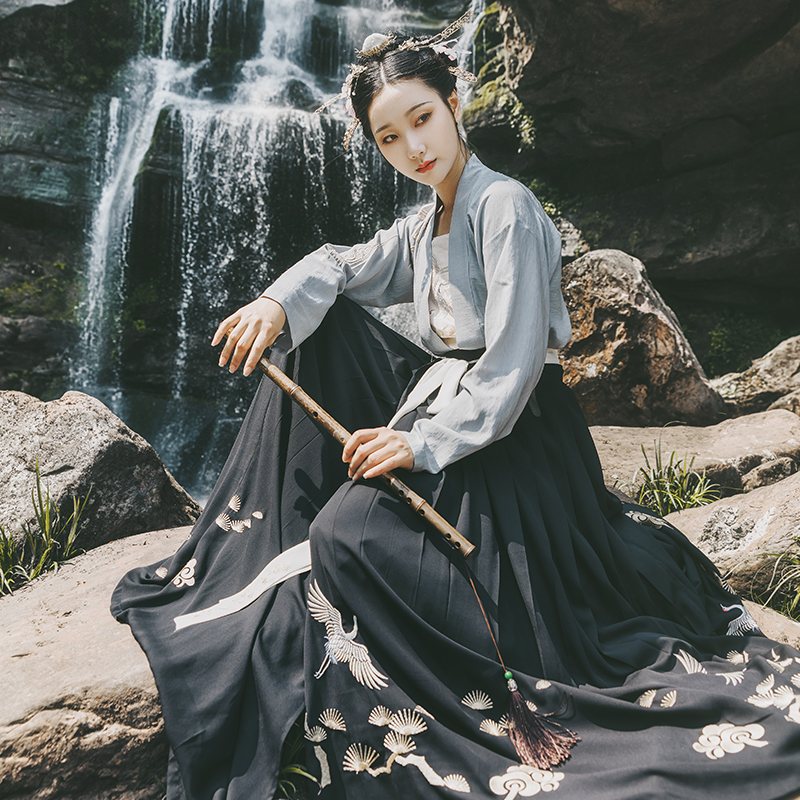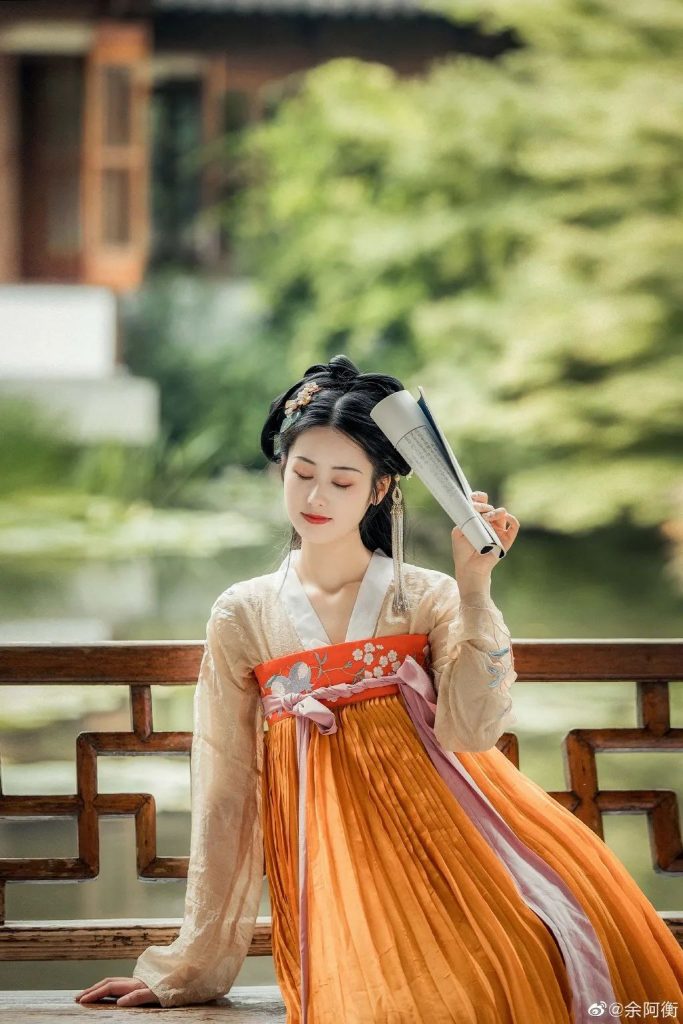In the realm of traditional attire, few garments encapsulate the rich tapestry of cultural heritage and historical depth as the Hanfu, the traditional clothing of the Han Chinese people. With a history that spans over three millennia, Hanfu is not merely a style of dress but a profound expression of Chinese civilization, embodying the aesthetics, philosophies, and social hierarchies of ancient China. This essay delves into the origins, evolution, and contemporary resurgence of Hanfu, exploring its significance and the enduring legacy it carries.

Origins and Historical Significance
The term “Hanfu” literally translates to “Han clothing,” where “Han” refers to the Han Dynasty (206 BC – 220 AD), a period often considered the golden age of Chinese culture and civilization. However, the roots of Hanfu trace back even further, to the earliest dynasties of China. Traditionally, Hanfu consists of a robe or a shirt for the upper body and a skirt or trousers for the lower body, often accompanied by a belt and sometimes a hat or headwear for formal occasions.

The design and structure of Hanfu reflect the Confucian ideals of propriety and harmony, emphasizing modesty, fluidity, and an elegant simplicity. The wide sleeves, flowing robes, and belted waists seen in Hanfu are designed to facilitate movement and convey a sense of dignity and grace. Over the centuries, Hanfu evolved, incorporating elements from various dynasties, each adding its unique influences to the fabric of this traditional attire.
Components and Styles
Hanfu encompasses a variety of styles, each tailored to different occasions, seasons, and social statuses. The most common components include the “Ru” (a Confucian-style robe), “Shan” (a long shirt), “Qun” or “Chang” (skirts of varying lengths), and “Ku” (trousers). Additionally, Hanfu attire often features layers, with the “Zhongyi” (inner garment) worn beneath the main robe or shirt, and the “Pao” (overcoat) for added warmth or formality.
Formal Hanfu attire, worn by scholars, officials, and the nobility, was distinguished by intricate designs and luxurious fabrics like silk, embroidered with motifs that symbolize good fortune, longevity, and prosperity. In contrast, the common people wore simpler Hanfu made from cotton or hemp, focusing on practicality and comfort.
Symbolism and Motifs
The aesthetic appeal of Hanfu extends beyond its physical beauty to the rich symbolism embedded within its motifs and colors. Dragons, phoenixes, lotuses, and chrysanthemums are common motifs, each carrying specific meanings and connotations. Colors also play a crucial role, with each hue representing different virtues, elements, and directions as per Chinese cosmology. For instance, red symbolizes good fortune and joy, while blue represents immortality and harmony.
Contemporary Resurgence and Cultural Impact
In recent years, there has been a significant revival of interest in Hanfu among the younger generations in China, driven by a desire to reconnect with their cultural heritage and express a unique identity. This resurgence is evident in the increasing visibility of Hanfu in festivals, ceremonies, and daily life, as well as in popular media, including films, television series, and social media platforms.
The contemporary Hanfu movement is not only about reviving traditional attire but also about fostering a deeper understanding and appreciation of Chinese culture and history. It has sparked discussions on identity, heritage, and the importance of preserving traditional values in a rapidly modernizing world.
Conclusion
Hanfu is more than just traditional Chinese clothing; it is a living symbol of China’s rich cultural heritage, a bridge connecting the past and the present. Through its intricate designs, symbolic motifs, and philosophical underpinnings, Hanfu offers a window into the soul of Chinese civilization. As it enjoys a contemporary resurgence, Hanfu continues to inspire and influence, not only as a fashion statement but as a profound expression of cultural pride and identity. In the folds of its fabric lies the story of a civilization, timeless and resplendent, inviting us to explore and appreciate the depth of China’s cultural legacy.